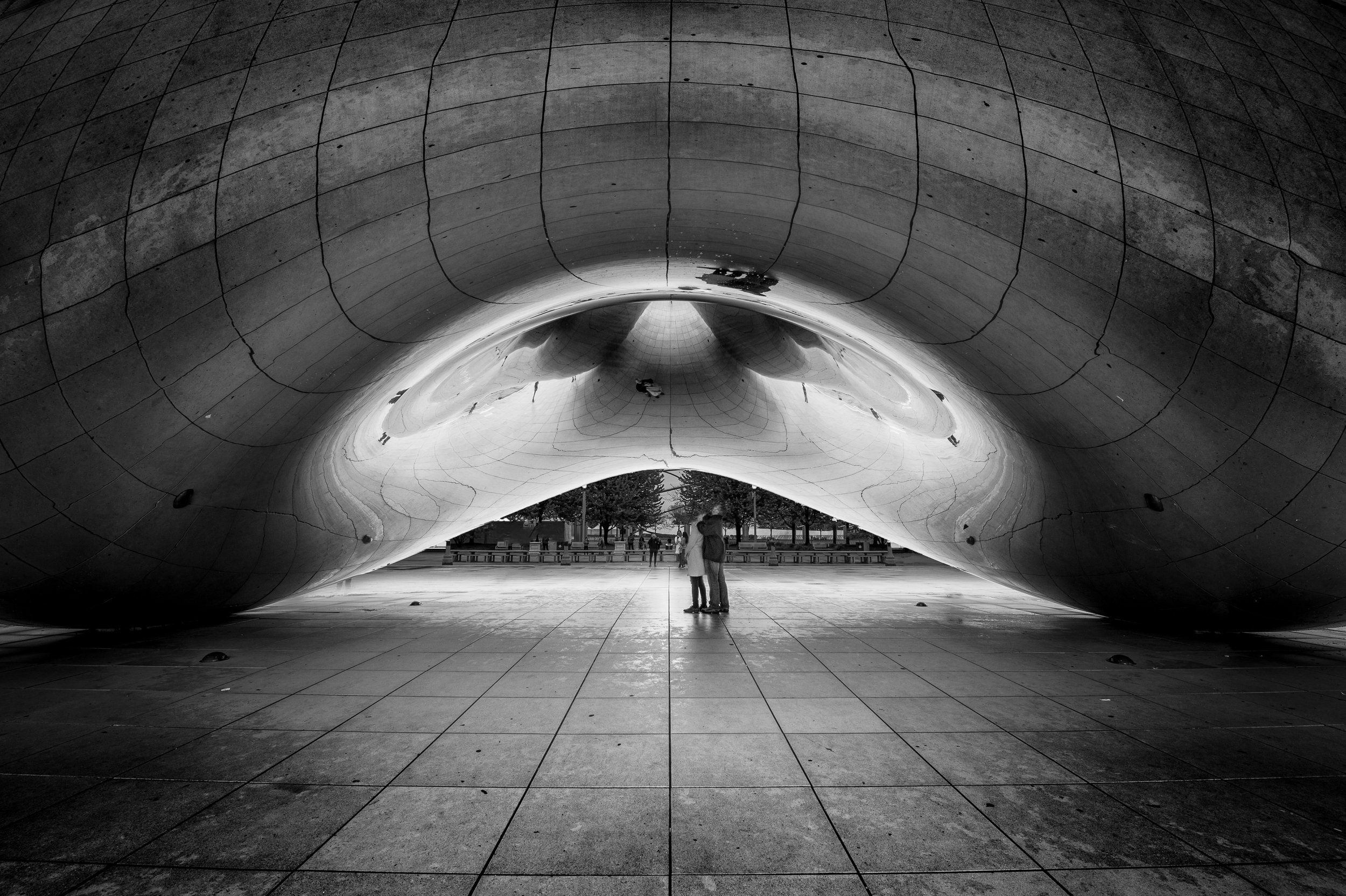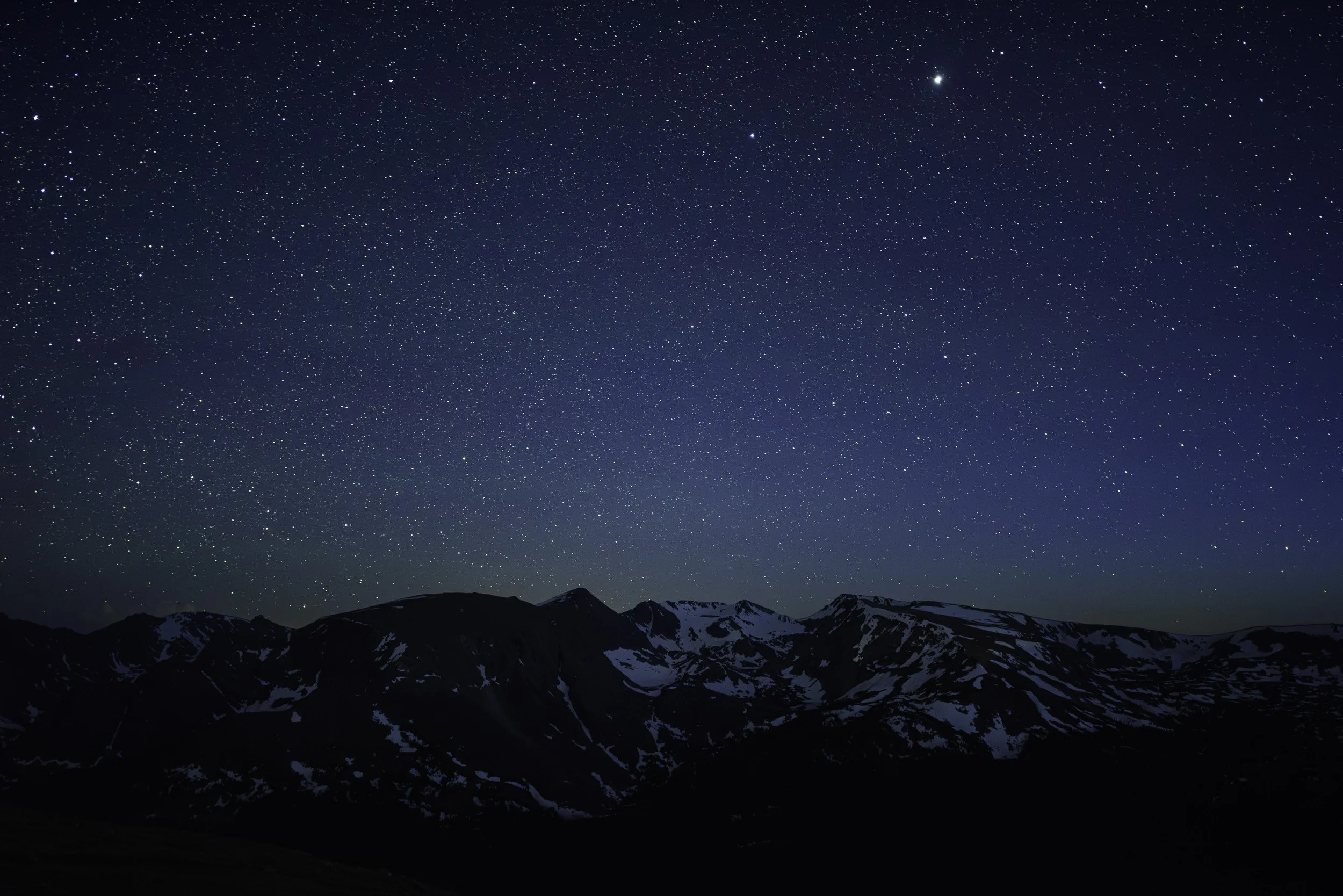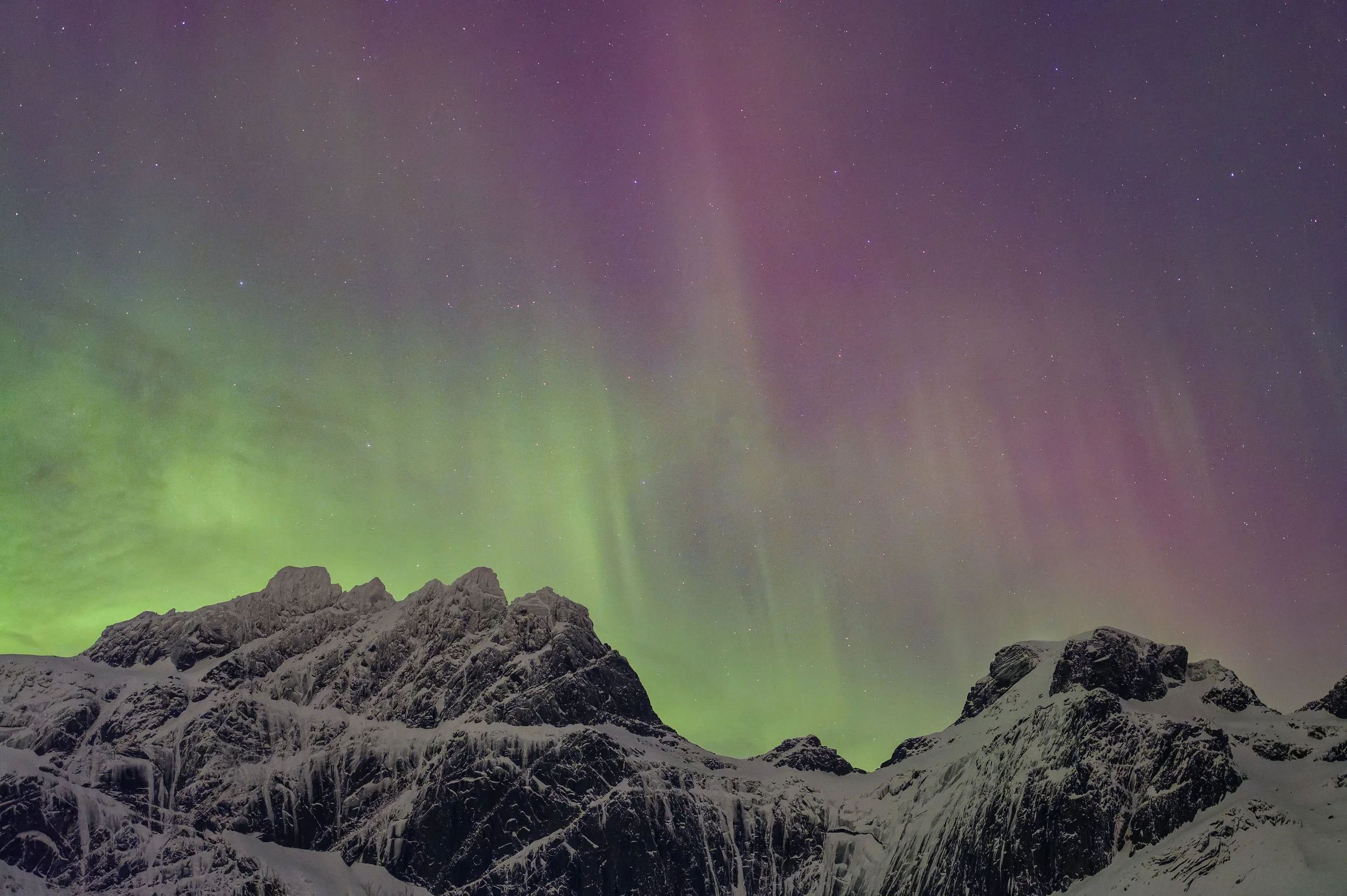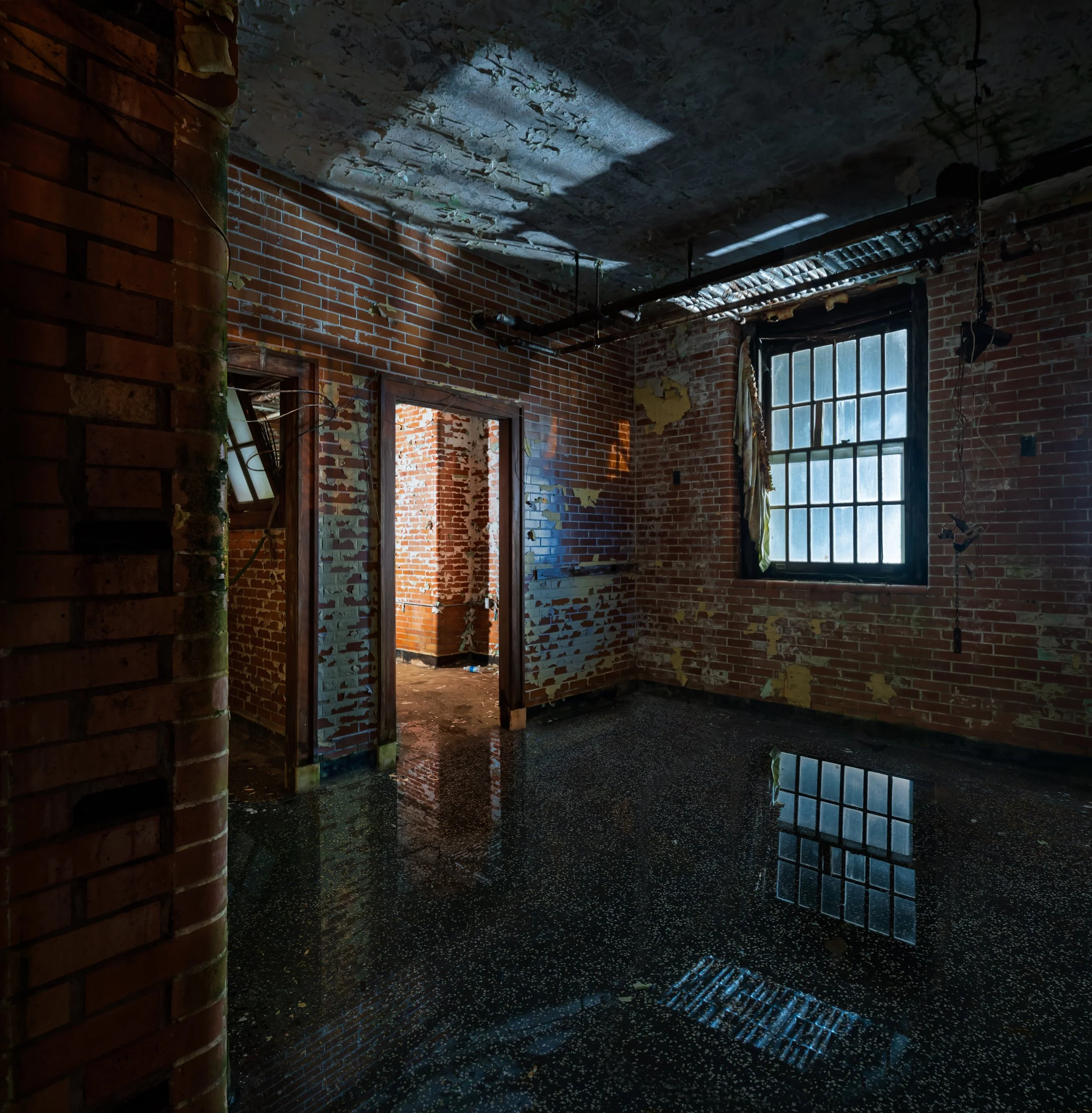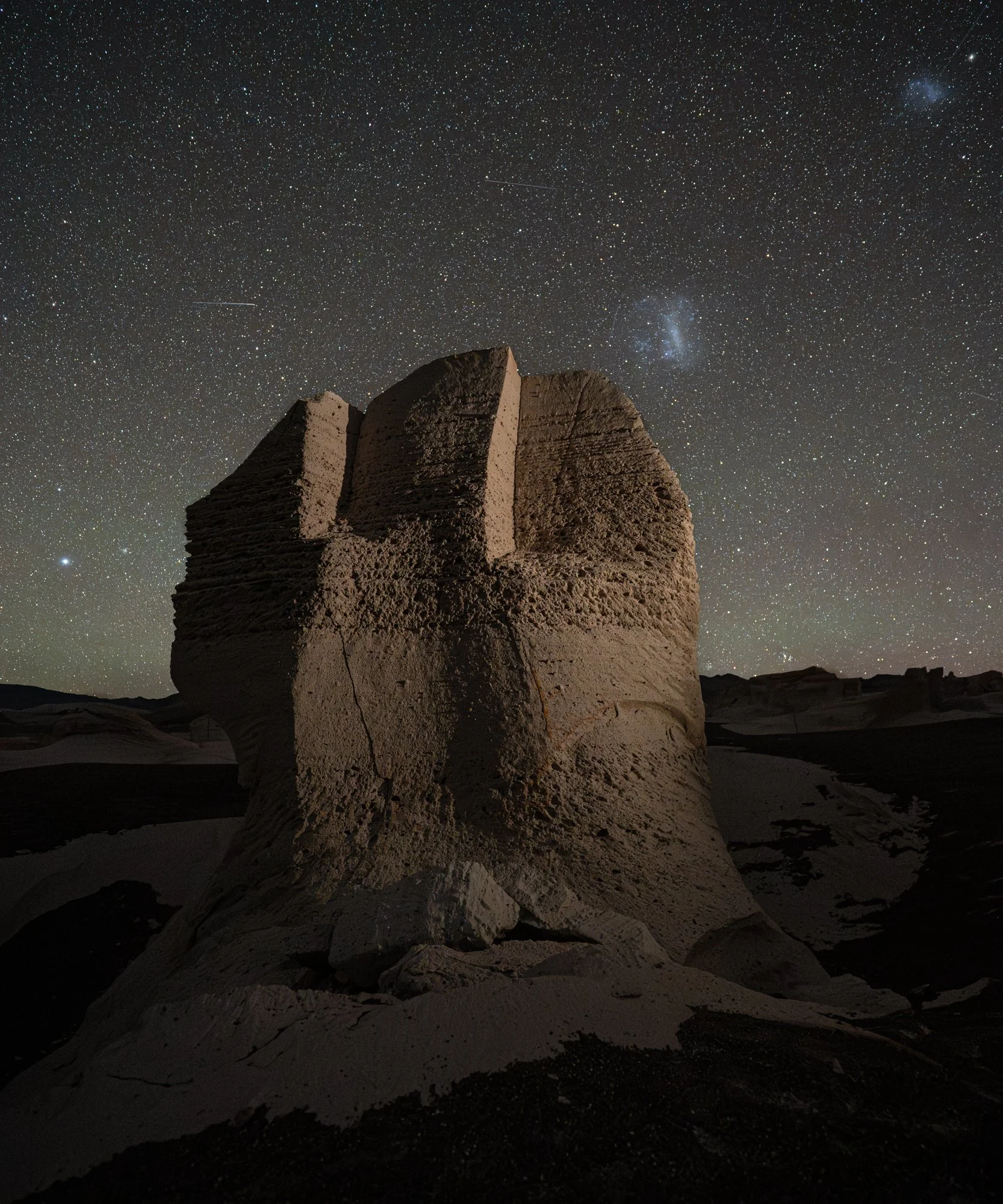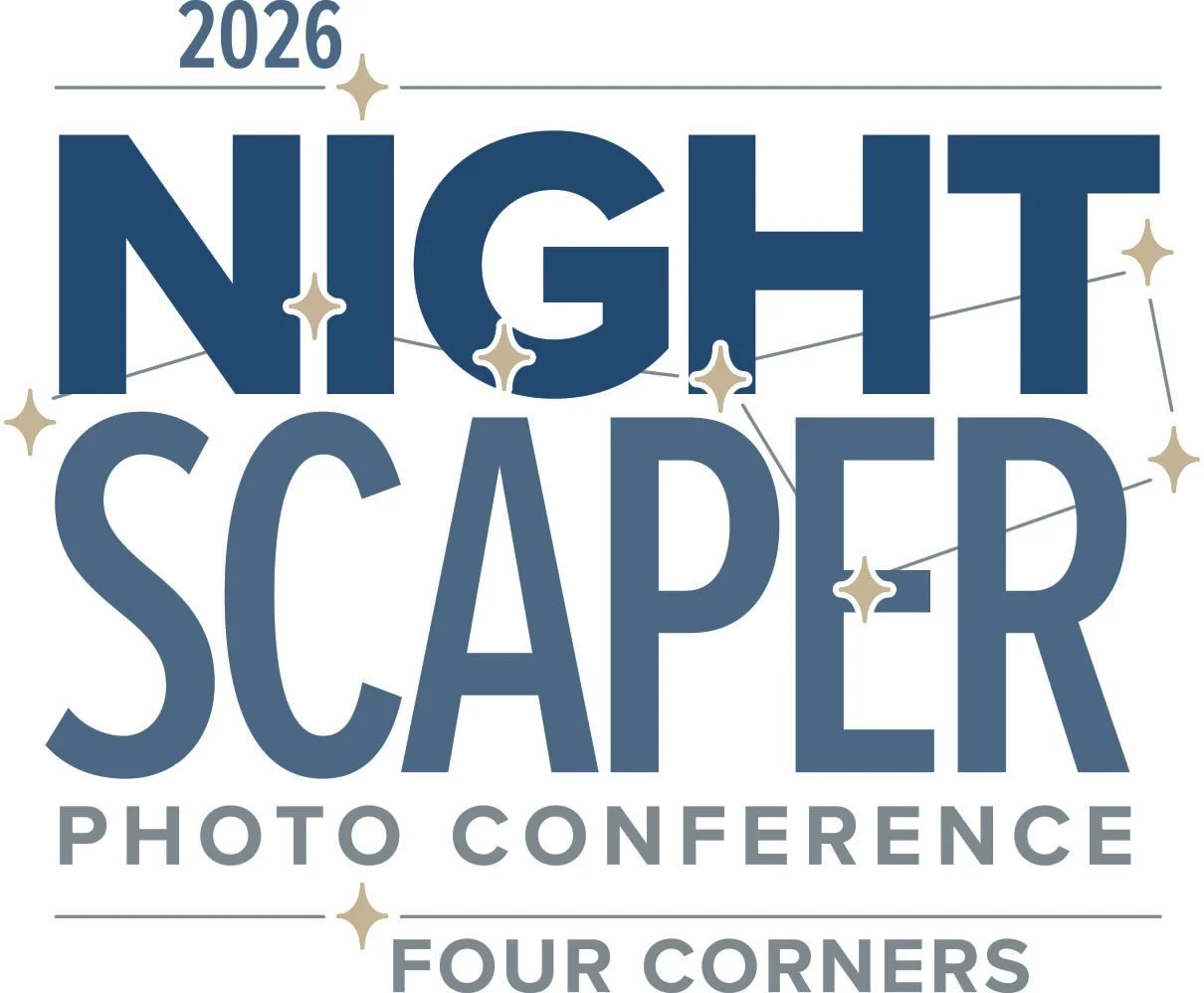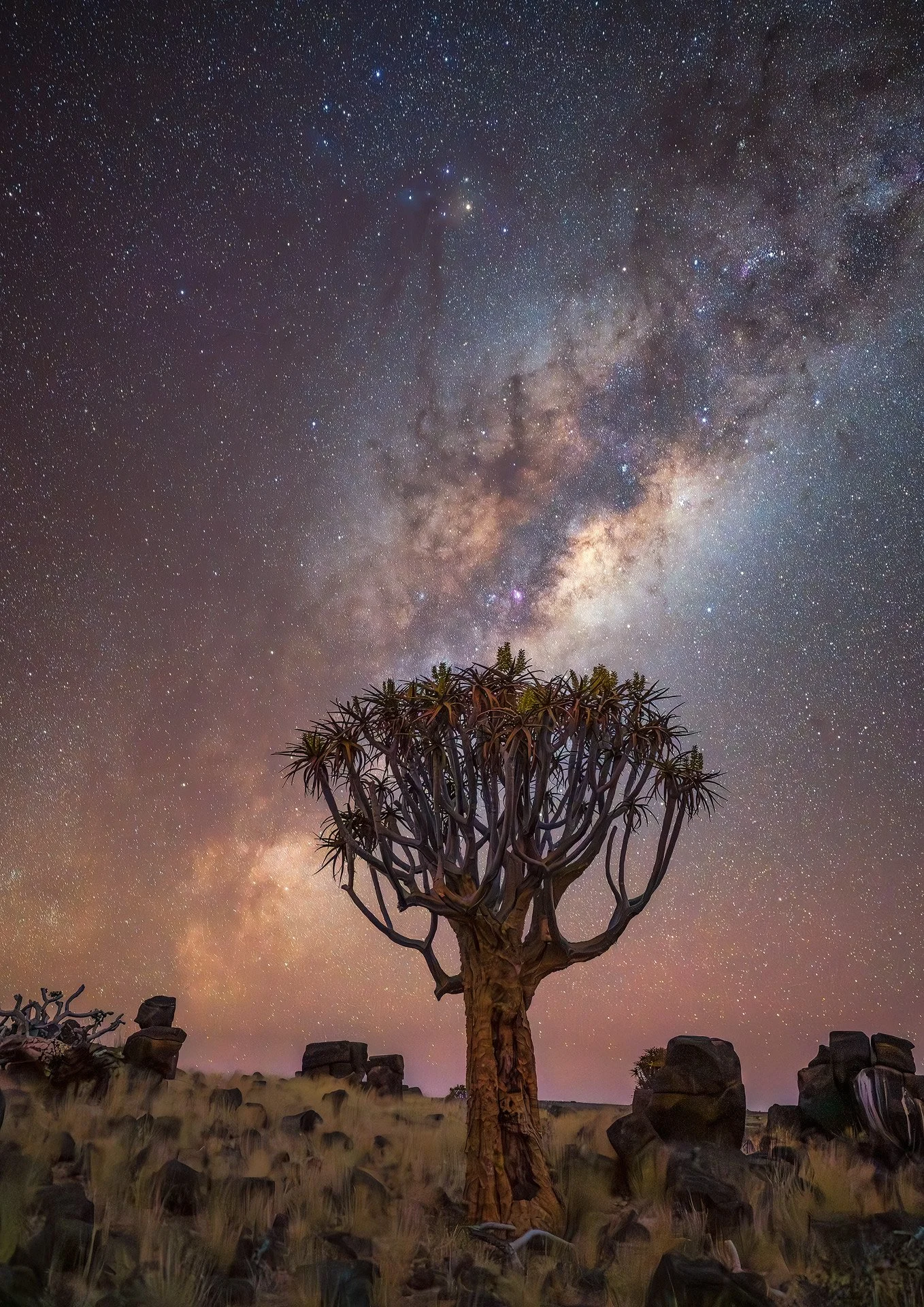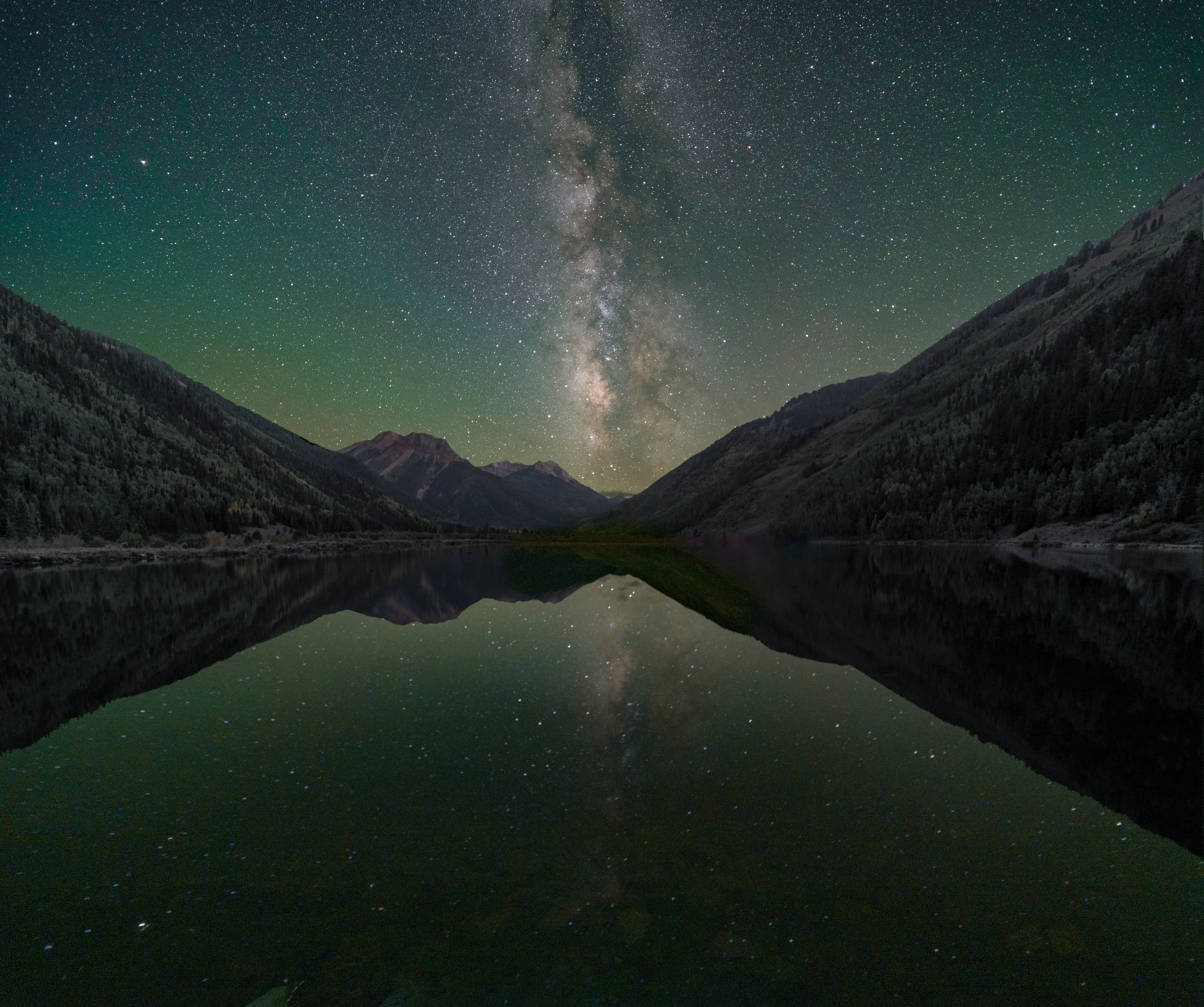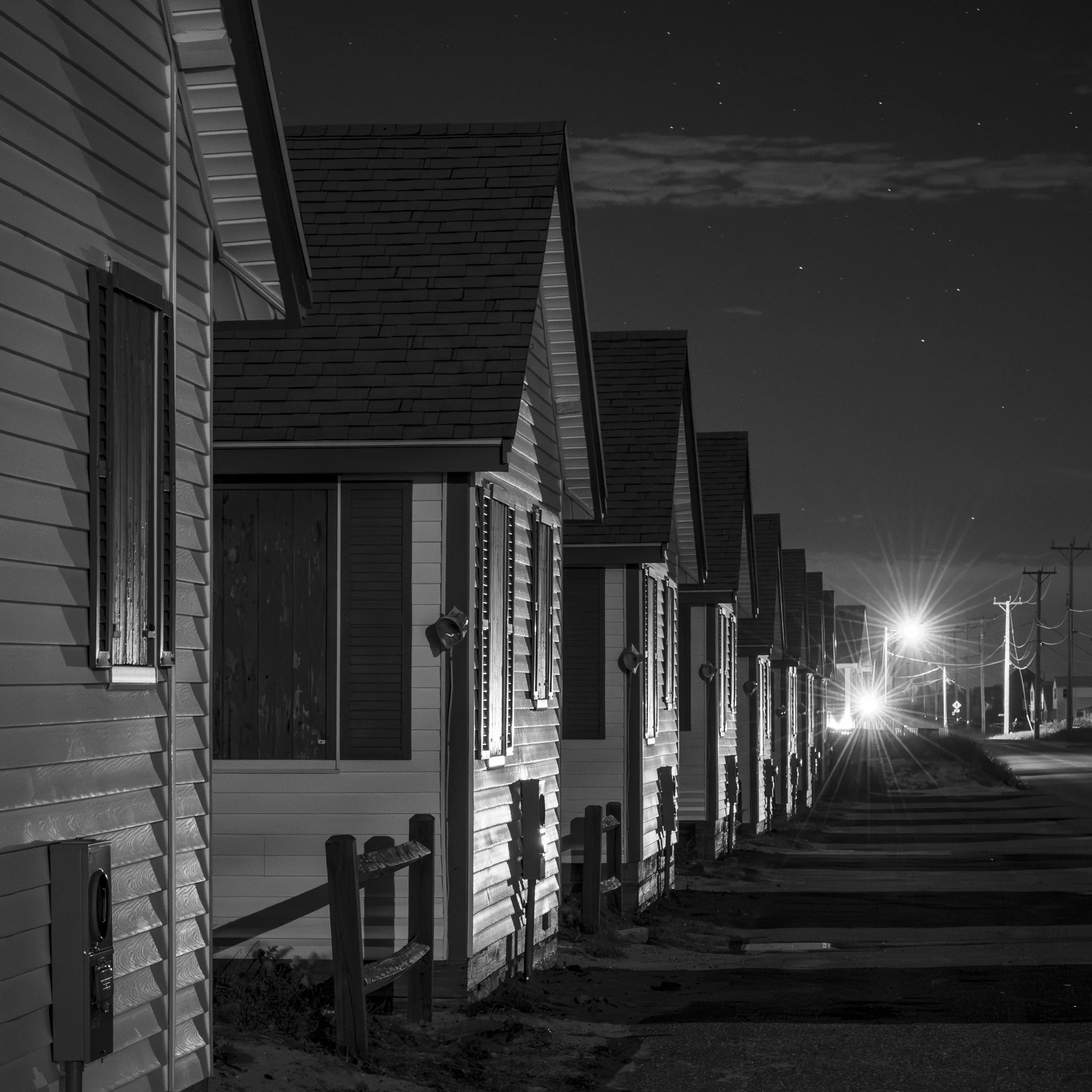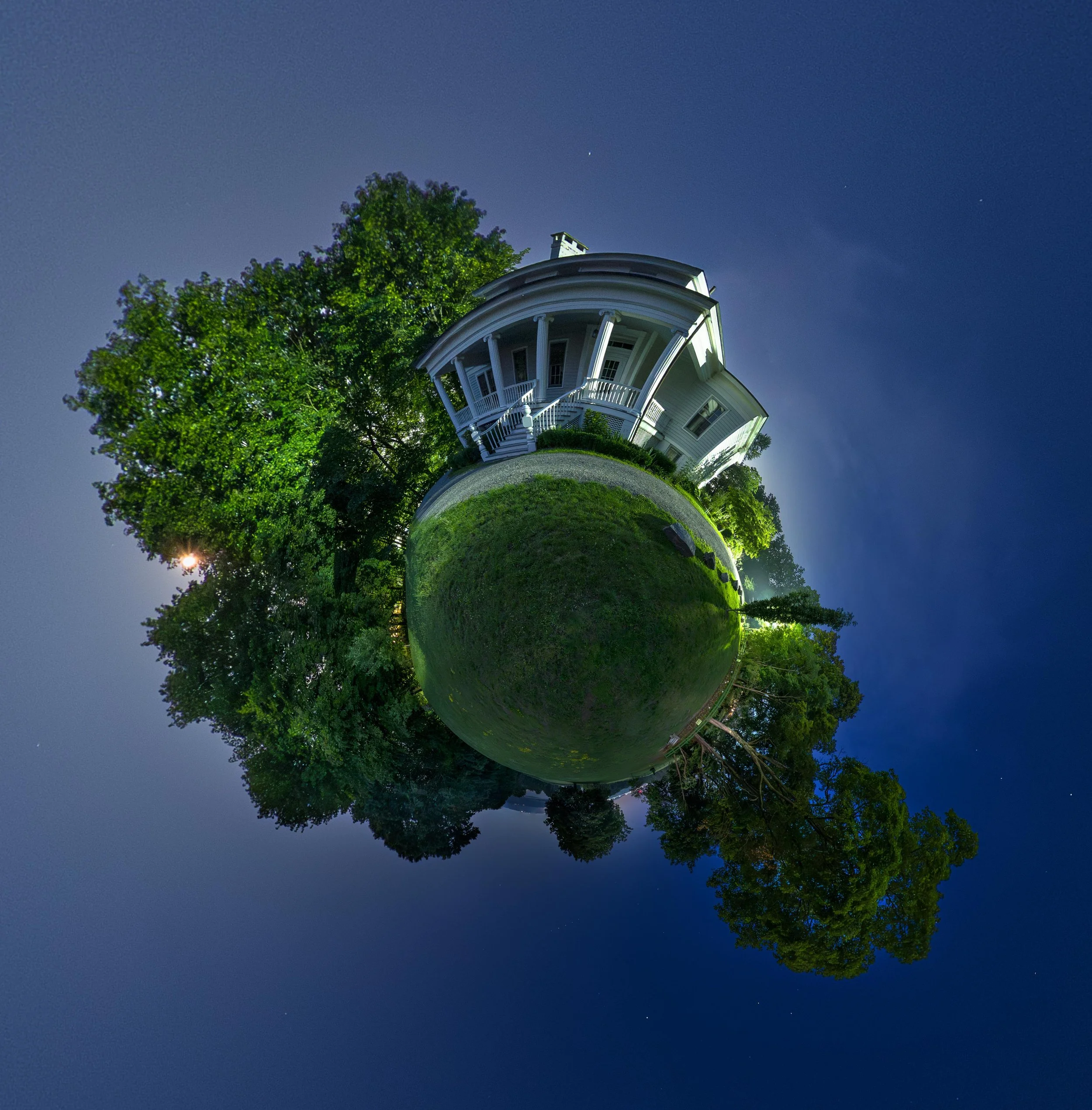Welcome again to an NPAN Q&A, where we share some of the great questions we’ve received via email. This time around we're featuring Q’s and A’s about using a popular light writing tool with night portraits, motorized mounts in astro-landscape photography, the orientation of the Milky Way, loupes for Live View, and tips about shooting Devils Tower.
If you have any questions you would would like to throw our way, contact us anytime!
1. Pixelsticks and Portraits
Night portraiture with a Pixelstick. 60 seconds, f/8, ISO 100. Nikon D750 with a Zeiss Distagon 15mm f/2.8 lens. Photo © Matt Hill.
Q. Can you tell me how you used the Pixelstick with speedlights [in the recent blog post “Tools for Illuminating the Night”]? When do the lights fire, before or after you draw with the Pixelstick? — Alison Carlino
A: The technique you’re asking about is a long exposure where I use the flash first, ask the model to stand still, and then run behind with the Pixelstick while the shutter is open. You can do it in either order, but I prefer the order I use.
First, I meter the ambient exposure, and then drop it by a stop. Second, I set up each flash to expose as I prefer. Third, I test for the Pixelstick exposure. Finally, I work all those elements into a composition I like. It’s like spinning plates. Exciting!
I’m planning on holding a couple of night portrait workshops to teach this technique. Stay subscribed for early announcements. ;-) — Matt
2. Motorized Mounts for Astro-landscape?
Q. I was curious about a motorized mount for night photography, such as the Sky-Watcher Star Adventurer. In the context of what we shoot with you guys (astro-landscape), that would not really ever be needed, right? In trying to figure out what that is used for, it seemed to be more for longer exposures of the sky alone, to get star points versus trails. It appears that if you include any foreground, the movement of the camera would blur it. — Martha Hale
A: You are absolutely correct! Motorized mounts are excellent for astrophotography, such as for shooting planets, deep-space objects or even ultrahigh-detail shots of the moon. But if you were to try to include any Earth-based foreground element, that would blur. You could, however, use the mount to create great star points with a long exposure at a low ISO, and then in post-production layer that with a separate, sharp exposure of the foreground. — Chris
3. Milky Way Orientation
Milky Way pano over Montana. Seven stitched images shot at 30 seconds, f/4, ISO 6400. Nikon D750 with Nikkor 14-24mm f/2.8 lens at 14mm. Photo © Gabriel Biderman.
Q. How do I know if the Milky Way will be an arch or in a vertical position? Is it in both positions at different times throughout the night? — Susan Manley
A. The Milky Way is an amazing thing to witness and capture, and it inspires creativity!
In the Northern Hemisphere the Milky Way season officially begins in April and goes until September. We can see the Milky Way all year, but the galactic core, or brightest part of the Milky Way, breaches the horizon at night during those months. It rises at about 2 to 4 a.m. in March, midnight to 2 a.m. in April, 10 p.m. to midnight in May, 8 to 10 p.m. in June, and earlier and earlier in the night through the summer. By August, it is high overhead by the time the sky gets dark.
The best time to see and photograph the long arc of the Milky Way is from late April to July, on nights with little to no moon.
Which orientation is preferred for photography? Totally your choice. The Milky Way arc is really a camera effect caused by including this massive astronomical structure arching across the sky in one photograph. It is best achieved by creating a panorama of four to eight stitched images. That way you can encompass the whole arc with minimal distortion. (You can learn more about that technique in our CreativeLive course.) On the other hand, when the Milky Way core shoots straight into the air from the horizon, you can capture the core with one exposure and be creative with where it intersects with the foreground.
By the way … it’s Milky Way season right now. Carpe noctem! — Gabe and Lance
4. Loupe for Live View
Q: I’m thinking of buying a loupe to use with Live View focusing on my Nikon D750. Trying to decide which model to buy. — S.G.
A: A loupe can be an excellent accessory for helping to focus at night. I’ve been using since last year not only because it can help to ease the focusing process in general, but also because my 45-year-old eyes appreciate the assist in focusing on the camera’s LCD! A focusable loupe does just that.
For the Nikon D750 (awesome night camera, BTW!), the HoodMan Compact Hoodloupe is an excellent choice, in terms of both quality and being the right size for the D750, or any of the very many other cameras with similar-size LCDs (i.e., 3.2 inches). — Chris
5. Devils Tower Tips
Devils Tower National Monument. 30 minutes, f/2.8, ISO 100. Nikon D750 with a Zeiss Distagon 15mm f/2.8 lens. Photo © Matt Hill.
Q: I will be traveling to Devils Tower National Monument in Wyoming. Per TPE, the moonrise time will provide a window of dark sky. Any suggestions for where to shoot? I’m looking at using my Genie Mini, doing time-lapse, panos or some star trails (with as little light pollution as possible) … I’m not picky, and will see what the moment dictates. — Megan
A: Devils Tower is actually really easy to shoot. It’s a rather small property that is circular. Some of my favorite locations are:
- From just outside the park, before the hotel/trading post—that curve in the road gives you a nice, long shot at the open sky with the tower in the middle. Ripe for a 70-200mm lens for details and long star trails.
- As you come in, there will be a parking lot to the left. Shooting from there gives you an awesome view of the North Star over the tower.
- As you drive to the base of the tower, there is one road to the left. Take that left, park in the little lot, and shoot from that meadow for a cool view. Last time I was there, we had stars and a thunderstorm at the same time. Amazing.
- Right up at the base of the tower is another great location, with a classic view as you come off the trail. And you can walk around the whole thing, which gives you a ton of photo options.
When shooting at Devils Tower, use the buddy system, and watch for sleeping snakes. I startled one once—I’m not sure who was more scared, the snake or me! Stay on the path for greatest safety. Scout during the daytime and you’ll find all these spots. There isn’t much light pollution out there, so enjoy the darkness! — Matt
Do you have a question the NPAN team might able to answer? Email us today!



